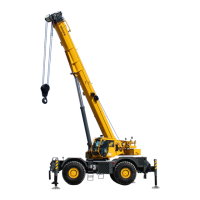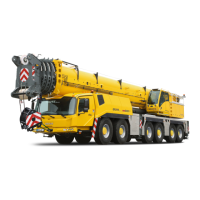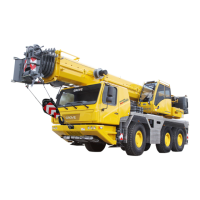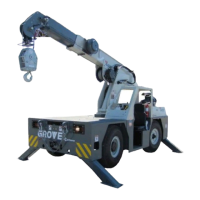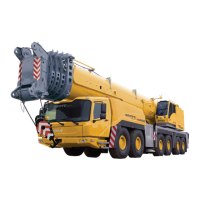Grove Published 01-29-2015, Control # 512-01 9-1
TMS700E SERVICE MANUAL LUBRICATION
SECTION 9
LUBRICATION
SECTION CONTENTS
General . . . . . . . . . . . . . . . . . . . . . . . . . . . . . . . . . . 9-1
Environmental Protection . . . . . . . . . . . . . . . . . . . 9-1
Arctic Conditions Below -9°C (15°F). . . . . . . . . . . 9-1
All Weather Package & Lubricants . . . . . . . . . . . . 9-1
Standard Lubricants Package . . . . . . . . . . . . . . . . 9-2
Lubrication Points . . . . . . . . . . . . . . . . . . . . . . . . . 9-3
Carrier Lubrication . . . . . . . . . . . . . . . . . . . . . . . . . 9-5
Superstructure Lubrication . . . . . . . . . . . . . . . . . 9-10
Boom, Boom Extension, and Boom
Accessories Lubrication. . . . . . . . . . . . . . . . . . . . 9-11
Wire Rope Lubrication . . . . . . . . . . . . . . . . . . . . . 9-13
Carwell® Rust Inhibitor. . . . . . . . . . . . . . . . . . . . . 9-15
Protecting Cranes From Rusting . . . . . . . . . . . . . 9-15
Cleaning Procedures . . . . . . . . . . . . . . . . . . . . . . 9-15
Inspection and Repair . . . . . . . . . . . . . . . . . . . . . 9-16
Application . . . . . . . . . . . . . . . . . . . . . . . . . . . . . . 9-16
Areas of Application. . . . . . . . . . . . . . . . . . . . . . . 9-17
GENERAL
Following the designated lubrication procedures is important
in ensuring maximum crane lifetime and utilization. The
procedures and lubrication charts in this section include
information on the types of lubricants used, the location of
the lubrication points, the frequency of lubrication, and other
information.
The service intervals specified are for normal operation
where moderate temperature, humidity, and atmospheric
conditions prevail. In areas of extreme conditions, the
service periods and lubrication specifications should be
altered to meet existing conditions. For information on
extreme condition lubrication, contact your distributor or
Manitowoc Crane Care.
ENVIRONMENTAL PROTECTION
Dispose of waste properly! Improperly disposing of waste
can threaten the environment.
Potentially harmful waste used in Manitowoc cranes includes
— but is not limited to — oil, fuel, grease, coolant, air
conditioning refrigerant, filters, batteries, and cloths which
have come into contact with these environmentally harmful
substances.
Handle and dispose of waste according to local, state, and
federal environmental regulations.
When filling and draining crane components, observe the
following:
• Do not pour waste fluids onto the ground, down any
drain, or into any source of water.
• Always drain waste fluids into leak proof containers that
are clearly marked with what they contain.
• Always fill or add fluids with a funnel or a filling pump.
• Immediately clean up any spills.
ARCTIC CONDITIONS BELOW -9°C (15°F)
In general, petroleum based fluids developed especially for
low temperature service may be used with satisfactory
results. However, certain fluids, such as halogenated
hydrocarbons, nitro hydrocarbons, and phosphate ester
hydraulic fluids, might not be compatible with hydraulic
system seals and wear bands.If you are in doubt about the
suitability of a specific fluid, check with your distributor or
Manitowoc Crane Care.
Regardless of temperature and oil viscosity, always use
suitable start-up procedures to ensure adequate lubrication
during system warm-up.
ALL WEATHER PACKAGE & LUBRICANTS
Arctic Conditions Down to -40°C (-40°F)
Engineering recommends the following lubricants for
components that will be operated in ambient temperatures to
-40°C (-40°F). Special lubricants alone are not sufficient to
CAUTION
Chassis grease lubricants must not be applied with air
pressure devices as this lubricant is used on sealed
fittings.
The multipurpose grease installed during manufacture is
of a lithium base. Use of a noncompatible grease could
result in damage to equipment.
Reference Only
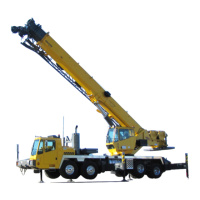
